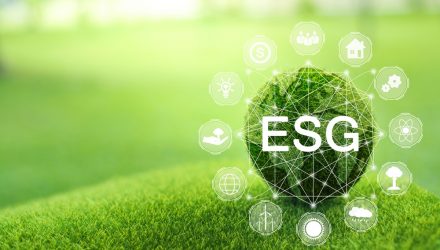As the landscape of environmental, social and governance (ESG) exchange traded funds continues its rapid paces of asset gathering and expansion, advisors and investors are demanding.
These days, “more” often means more ESG purity, less greenwashing and more intentional focus on the benefits of ESG. Active management can enhance those objectives and it’s accessible via ETFs such as the American Century Sustainable Growth ETF (ESGY).
ESGY’s status as an active fund indicates there are potential benefits to investors, including the ability to better assess ESG risks and rewards.
“It’s critical to make a distinction between risk and impact when considering the environmental, social, and governance factors used in sustainable investing. There is ongoing conflation and confusion in this area,” says Morningstar analyst Kristoffer Inton.
For its part, ESGY’s area of emphasis is large-cap growth stocks, many of which score well on various ESG metrics. As of Feb. 28, ESGY allocates about 30% of its total weight to Microsoft (NASDAQ:MSFT), Apple (NASDAQ:AAPL) and Google parent Alphabet (NASDAQ:GOOG) – stocks with impressive quality characteristics and solid ESG credentials.
Enabling ESGY
To its credit, ESGY doesn’t simply cobble together a roster of large- and mega-cap communication services and technology stocks and purport to be an ESG fund. There’s more to the story. American Century applies a multi-source, research-intensive methodology to identify companies with sound ESG traits. Over time, it’s possible that approach could be a better tell regarding companies’ ESG impacts relative to competing index-based strategies.
“It’s incredibly difficult to estimate if a company’s impact pursuits are making a difference on a global basis,” adds Inton. “While there are plenty of metrics to assess ESG risk, there are fewer for impact. Thus, it’s challenging to objectively measure whether a company’s spending to drive this impact is ‘worth it,’ as the answer will depend heavily on each investor’s preferences and perception. And the lack of detailed disclosures on how much is actually spent toward these goals adds even more difficulty.”
To be sure, ESGY is tech-heavy, allocating 49% of its roster to that sector, but that can be sign as a sign that the ETF provides investors with ESG avenue to positioning for a rebound in that sector and the broader large-cap growth space. Overall, the fund could be a solid idea for committed, long-term ESG investors.
“For prudent investors, the path forward is the same we’ve walked for some time–a focus on the contributions or detractions from risks and opportunities that can affect a company’s worth–but with the additional lens that increased ESG data provides,” concludes Inton.
For more news, information, and strategy, visit the Core Strategies Channel.
The opinions and forecasts expressed herein are solely those of Tom Lydon, and may not actually come to pass. Information on this site should not be used or construed as an offer to sell, a solicitation of an offer to buy, or a recommendation for any product.


